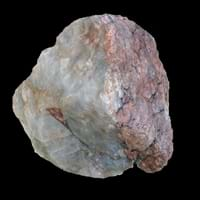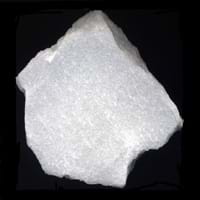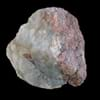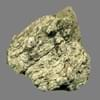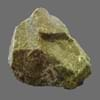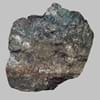Definition
Pegmatite rock is a holocrystalline, intrusive igneous rock which is composed of interlocking phaneritic crystals
Marble is a non-foliated metamorphic rock which is composed of recrystallized carbonate which is formed when limestone is exposed to high temperatures and pressures over a long time
Discoverer
R. J. Hauy
Unknown
Etymology
From Greek pegma, pegmat which means- thing joined together + -ite
From the Greek marmaros, shining stone and also from the English word marmoreal meaning marble-like
Class
Igneous Rocks
Metamorphic Rocks
Sub-Class
Durable Rock, Hard Rock
Durable Rock, Medium Hardness Rock
Group
Plutonic
Not Applicable
Other Categories
Coarse Grained Rock, Opaque Rock
Medium Grained Rock, Opaque Rock
Texture
Pegmatitic
Granular
Color
Black, Brown, Cream, Green, Grey, Pink, Red, Rust, Silver, White, Yellow
Black, Blue, Brown, Grey, Pink, White
Durability
Durable
Durable
Scratch Resistant
Yes
Yes
Appearance
Layered, Banded, Veined and Shiny
Veined and Shiny
Interior Uses
Decorative Aggregates, Flooring, Interior Decoration
Bathrooms, Countertops, Decorative Aggregates, Entryways, Floor Tiles, Homes, Hotels, Interior Decoration, Kitchens, Stair Treads
Exterior Uses
As Building Stone, As Facing Stone, Paving Stone
As Building Stone, As Facing Stone, Garden Decoration, Office Buildings, Paving Stone
Other Architectural Uses
Curbing
Not Yet Used
Construction Industry
As Dimension Stone, Building houses or walls, Construction Aggregate, for Road Aggregate, Landscaping
As Dimension Stone
Medical Industry
Not Yet Used
Not Yet Used
Antiquity Uses
Artifacts, Sculpture, Small Figurines
Artifacts, Jewellery, Monuments, Sculpture, Small Figurines
Commercial Uses
Creating Artwork, Jewelry, Source of corundum, tourmalines, beryls and topaz
Cemetery Markers, Commemorative Tablets, Creating Artwork, Curling, Laboratory bench tops, Paper Industry, Tombstones, Used in aquariums, Whiting material in toothpaste, paint and paper
Types
Granite Pegmatite, Gabbro Pegmatite and Diorite Pegmatite
Breccia Marble, Carrara Marble, Calacatta marble, Cultured Marble, Polished Marble, Honed Marble, Sand Marble
Features
Generally rough to touch, Is one of the oldest rock, Source of corundum, tourmalines, beryls and topaz
Available in Lots of Colors and Patterns, Easily splits into thin plates, Generally rough to touch, Is one of the oldest rock
Archaeological Significance
Monuments
Not Yet Used
Used
Famous Monuments
Not Applicable
Al Aqsa Mosque in Jerusalem, Buland Darwaza in Agra, India, Capitol Hill Building, Washington DC, Charminar in Hyderabad, India, Chhatrapati Shivaji Terminus in Maharashtra, India, Ephesus in Turkey, Faisal Mosque in Islamabad, Pakistan, Humayun's Tomb in Delhi, India, Jama Masjid in Delhi, India, Lotus Temple in New Delhi, India, Louvre in Paris, France, Mysore Palace in Karnataka, India, Neuschwanstein in Bavaria, Palace of Parliament in Bucharest, Romania, Parthenon in Greece, Potala Palace in Lahasa, Tibet, Prophet’s Mosque in Medina, Qutb Minar in India, Saint Basil's Cathedral in Moscow, Russia, St. Peter’s Cathedral in Vatican City, Taj Mahal in Agra, India, Tower of Pisa, Italy, Victoria Memorial in Kolkata, India, Washington Monument, US
Famous Sculptures
Data Not Available
Ajanta Caves in Maharashtra, India, Bust of Artemis, Elephanta Caves in Maharashtra, India, Lincoln Memorial in America
Pictographs
Not Used
Used
Petroglyphs
Not Used
Used
Formation
Pegmatite rock is holocrystalline, intrusive igneous rock which is formed by partial melting and dewatering during the process of metamorphism.
Marble is a metamorphic rock produced from limestone in the earth crust. It is formed by the metamorphism of limestone.
Mineral Content
Apatite, Beryl, Feldspar, Fluorite, Garnet, Lepidolite, Quartz, Silica, Spodumene, Topaz
Garnet, Graphite, Olivine, Pyrite, Quartz
Compound Content
Aluminium Oxide, CaO, Iron(III) Oxide, FeO, Potassium Oxide, Magnesium Carbonate, MgO, Phosphorus Pentoxide
CaO, Iron(III) Oxide, FeO, MgO, Silicon Dioxide
Types of Metamorphism
Burial Metamorphism, Cataclastic Metamorphism, Contact Metamorphism, Hydrothermal Metamorphism, Impact Metamorphism, Regional Metamorphism
Impact Metamorphism
Types of Weathering
Biological Weathering, Chemical Weathering, Mechanical Weathering
Biological Weathering, Chemical Weathering, Mechanical Weathering
Types of Erosion
Chemical Erosion, Coastal Erosion, Glacier Erosion, Sea Erosion, Water Erosion, Wind Erosion
Chemical Erosion, Coastal Erosion
Grain Size
Medium to Coarse Grained
Medium Grained
Fracture
Conchoidal
Not Available
Porosity
Less Porous
Less Porous
Luster
Grainy, Pearly and Vitreous
Dull to Pearly to Subvitreous
Toughness
2.1
Not Available
Specific Gravity
2.6-2.63
2.86-2.87
Transparency
Translucent to Opaque
Opaque
Density
2.6-2.65 g/cm3
2.4-2.7 g/cm3
Specific Heat Capacity
Not Available
Resistance
Heat Resistant, Impact Resistant, Pressure Resistant
Heat Resistant
Deposits in Eastern Continents
Asia
China, India, Iran, Japan, Nepal, North Korea, Russia, Saudi Arabia, South Korea
China, India
Africa
South Africa
Namibia
Europe
Austria, France, Greece, Ireland, Italy, Netherlands, Slovakia, Spain, Turkey, Ukraine
Italy, Spain
Others
Not Yet Found
Not Yet Found
Deposits in Western Continents
North America
Canada
Not Yet Found
South America
Brazil
Not Yet Found
Deposits in Oceania Continent
Australia
New South Wales, Queensland, South Australia, Western Australia
New South Wales, New Zealand, Queensland, Victoria
Pegmatite vs Marble Characteristics
Though some rocks look identical, they have certain characteristics which distinguish them from others. Characteristics of rocks include texture, appearance, color, fracture, streak, hardness etc. Pegmatite vs Marble characteristics assist us to distinguish and recognize rocks. Also you can check about Properties of Pegmatite and Properties of Marble. Learn more about Pegmatite vs Marble in the next section. The interior uses of Pegmatite include Decorative aggregates, Flooring and Interior decoration whereas the interior uses of Marble include Bathrooms, Countertops, Decorative aggregates, Entryways, Floor tiles, Homes, Hotels, Interior decoration, Kitchens and Stair treads. Due to some exceptional properties of Pegmatite and Marble, they have various applications in construction industry. The uses of Pegmatite in construction industry include As dimension stone, Building houses or walls, Construction aggregate, For road aggregate, Landscaping and that of Marble include As dimension stone.
More about Pegmatite and Marble
Here you can know more about Pegmatite and Marble. The life cycle of a rock consists of formation of rock, composition of rock and transformation of rock. The composition of Pegmatite and Marble consists of mineral content and compound content. The mineral content of Pegmatite includes Apatite, Beryl, Feldspar, Fluorite, Garnet, Lepidolite, Quartz, Silica, Spodumene, Topaz and mineral content of Marble includes Garnet, Graphite, Olivine, Pyrite, Quartz. You can also check out the list of all Igneous Rocks. When we have to compare Pegmatite vs Marble, the texture, color and appearance plays an important role in determining the type of rock. Pegmatite is available in black, brown, cream, green, grey, pink, red, rust, silver, white, yellow colors whereas, Marble is available in black, blue, brown, grey, pink, white colors. Appearance of Pegmatite is Layered, Banded, Veined and Shiny and that of Marble is Veined and Shiny. Properties of rock is another aspect for Pegmatite vs Marble. The hardness of Pegmatite is 7 and that of Marble is 3-4. The types of Pegmatite are Granite Pegmatite, Gabbro Pegmatite and Diorite Pegmatite whereas types of Marble are Breccia Marble, Carrara Marble, Calacatta marble, Cultured Marble, Polished Marble, Honed Marble, Sand Marble. Streak of rock is the color of powder produced when it is dragged across an unweathered surface. The streak of Pegmatite and Marble is white. The specific heat capacity of Pegmatite is Not Available and that of Marble is 0.88 kJ/Kg K. Depending on the properties like hardness, toughness, specific heat capacity, porosity etc., rocks are resistant to heat, wear, impact, etc.Pegmatite is heat resistant, impact resistant, pressure resistant whereas Marble is heat resistant.
